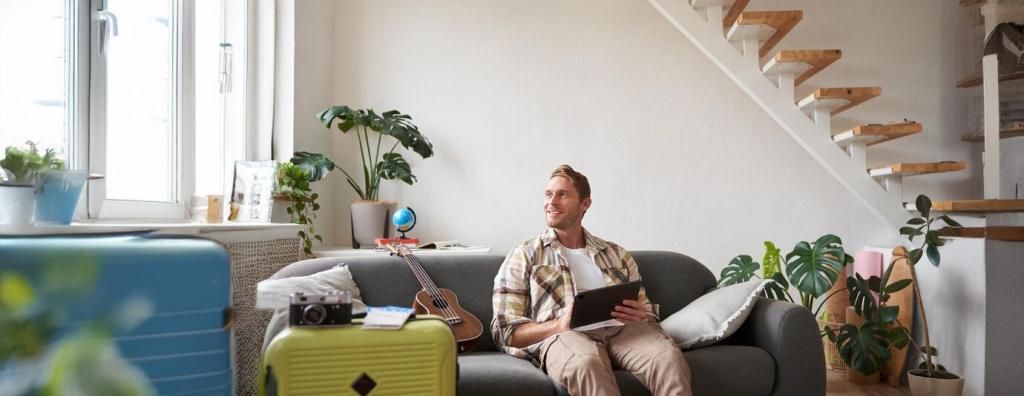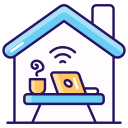Security Upgrades with Smart Home Technologies
Why Smart Security Matters Now
Modern security is not just a deadbolt; it is a learning ecosystem. Cameras flag unusual motion, sensors watch doors and windows, and automations deter intruders while keeping family routines smooth and stress-free.

Building Your Smart Security Stack
Cameras, Sensors, and Smart Locks Working Together
Pair wide-angle cameras at entries with contact sensors on doors and windows. Add a smart lock that auto-locks after entry. When a door opens unexpectedly, lights activate, cameras record, and you get instant verification.
Hubs and Protocols That Play Nice
Hubs supporting Matter, Thread, Zigbee, and reliable Wi‑Fi create flexible, future-ready systems. Favor devices with local control paths where possible, to reduce cloud dependency and keep critical automations running even during outages.
Privacy-First Brands and Local Processing
Seek vendors offering on-device person detection, encrypted storage, and transparent policies. Local video recording via an NVR or supported home hub minimizes exposure while still providing rich alerts when it truly matters.

See Without Being Seen
Mount cameras at chest-to-eye height for facial clarity, slightly off-center to avoid glare. Cover key approaches and package zones, but respect neighbors’ privacy lines. Use hooded mounts to cut reflections and weather flare.

Network Hygiene and Segmentation
Place devices on a dedicated IoT network or VLAN, disable unnecessary UPnP, and use strong, unique passphrases. A separate guest network keeps visitors connected while protecting your core security infrastructure and personal devices.

Power, Redundancy, and Offline Resilience
Back critical devices with a UPS, and prefer PoE for stationary cameras. Ensure key automations run locally. If the internet drops, recording and alarms should continue, and doors must still operate safely.
Automation Routines That Deter and Defend
Automate lights, shades, and audio to simulate activity when you are away. Randomized schedules look human, especially when paired with driveway lighting and a porch lamp that reacts to motion after dusk.
Data Security and Account Protection
01
Use platforms supporting end-to-end encryption for video and telemetry. Prefer SRTP for streams and TLS for control. Avoid weak defaults, rotate keys when possible, and block third-party analytics you do not explicitly need.
02
Enable multi-factor authentication or passkeys, assign unique roles to household members, and use distinct emails for admin accounts. Audit app permissions regularly and revoke access when devices are sold, repaired, or gifted.
03
Local storage limits exposure and saves subscription fees, while cloud backups add resilience and remote access. Hybrid models deliver both. Choose based on legal requirements, comfort with vendors, and your bandwidth realities.
Testing, Maintenance, and Continuous Improvement
Schedule a quick drill: confirm door sensors, test sirens at low volume, and verify notifications on every family phone. Practicing calmly now prevents confusion when an unexpected alert really happens.
Testing, Maintenance, and Continuous Improvement
Batch firmware updates and app patches during a planned window. Read change logs, snapshot settings, and have a rollback plan. A steady routine prevents surprise downtime and keeps features and protections current.


Inclusivity, Access, and Everyday Usability
Create a single, simple dashboard with clear modes and labels. Add voice support for hands-busy moments, and tactile buttons for emergencies. Usability is a safety feature—invite feedback and keep iterating together.
Inclusivity, Access, and Everyday Usability
Generate time-bound PINs or mobile keys for visitors. Log entries without oversharing. Automated relocking and alerts maintain control while hospitality remains effortless. Tell us your guest management tips in the comments below.


